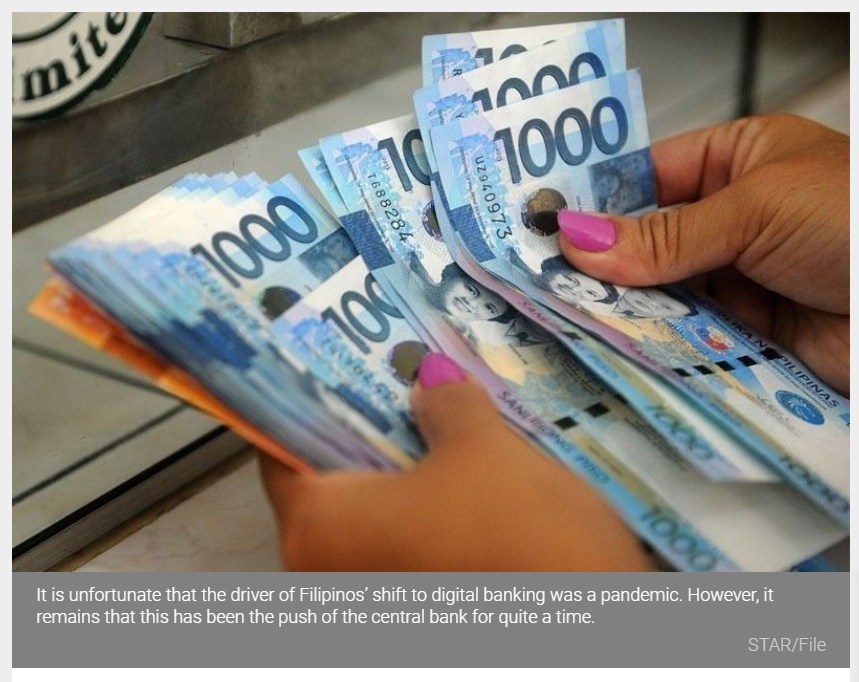Philippines: Commentary: COVID-19 disrupts legacy banking
MANILA, Philippines — Over-the-counter banking will be among the casualties of the coronavirus disease 2019 (COVID-19) in the Philippines. A decline of up to 50% in branch-based operations can be expected in the wake of this pandemic.
The effects of the nation’s collective trauma from this experience will persist long after the last patient recovers and the virus is wiped out from the country. Fear of contracting a deadly disease is the specter that will haunt the financial market. Clients will be wary of face-to-face transactions. Aversion to the use of banknotes, and coins will continue. There will be no going back to banking as Filipinos have known it before.
Grim as the prospect sounds, this drastic change is ultimately for the best of the industry. In fact, this new behavior is being abetted by the banks themselves.
The enforcement of the enhanced community quarantine (ECQ) included strict restrictions on mobility. Even with the sector tagged as an essential service which allowed banks to run as frontliners, branch operations have been rationalized with only 30% of workforce providing service. Inversely, the public requires more financial service in response to the crisis.
To bridge the gap, banks have marshalled their customers to their digital platforms. “Bank from home” became the battle cry of many. Quickly deploying responsive and relevant digital initiatives has been the order of the day. Teams working from home have extended hours to make this happen. This is what agility is all about.
New web signups and app downloads have grown in the first four months of the year to more than 100% year-on-year buoyed by strong figures during the ECQ. Long-term goals of digital adoption was achieved in a few weeks’ time. Now, the ball is on the banks’ court.
The industry readily stepped up to the plate. Banks already have their systems in place to offer their services online and in-app. Initial campaigns focused on educational materials in traditional and social media to inform users of various features and how to make the most of them. Banks also provided incentives to encourage their use, such as charge-free fund transfers.
Even before the dust has settled on the mad rush online, lenders, with the guidance of the Bangko Sentral ng Pilipinas (BSP), continue to come up with updates to enable wider use, offer additional functionalities, and enhance customer experience. Only a handful of transactions remain branch-exclusive, at least for now.
Therein lies the rub. The more that banks offer a convenient, fast, and secure digital alternatives to their clients, the more that these institutions drive the latter’s behavior away from physical banks. The use of web and app platforms will soon cease to be a matter of necessity but of preference. Brick-and-mortar bank branches will become obsolete. Welcome to the era of hi-tech, no-touch yet empathy-filled customer interface.
Again, these are not negative in any way. It is unfortunate that the driver of Filipinos’ shift to digital banking was a pandemic. However, it remains that this has been the push of the BSP for quite a time. Fintech allows the inclusion of more Filipinos into the fold of the banking sector. It resolves issues on distance, extra costs, and other real and imagined barriers for the unbanked and underserved sectors.
It has been said that the COVID-19 crisis will usher in a new normal. For banking, it is the shift from traditional branch-based transactions to the online platform. We have seen the quick evolution of bank-techs optimizing digital technology. In the future, the industry will look at this shift as one of the few good things borne out of trying times.
Source: https://www.philstar.com/business/2020/05/14/2013800/commentary-covid-19-disrupts-legacy-banking


 English
English




